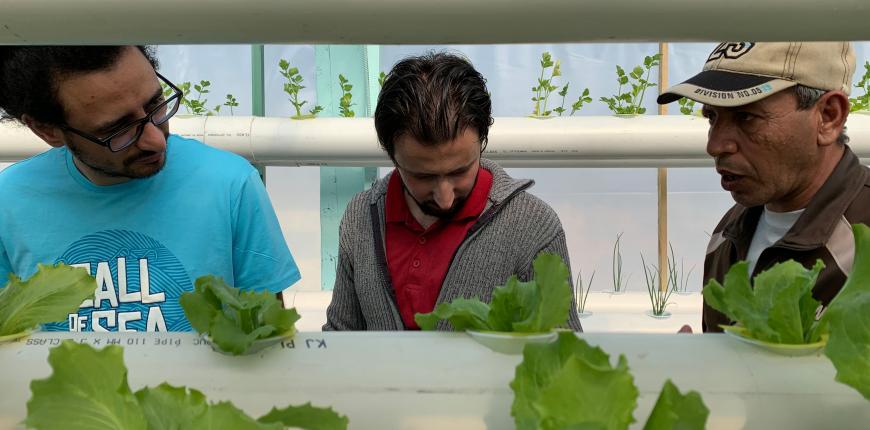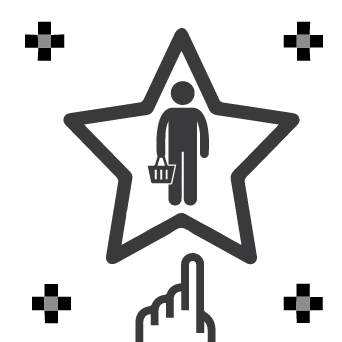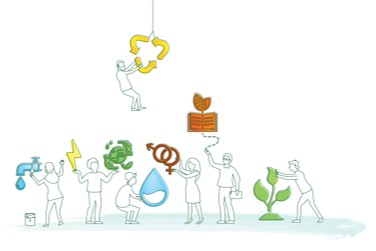Water Scarcity
Globally, water-related issues present one of the biggest challenges that need the attention of governments, civil society and private sector. More than 2 million people do not have access to safe drinking water and 4.5 billion people live without access to sanitation. With climate change becoming increasingly apparent, water scarcity is set to rise as well over the next years.
Water entrepreneurship as a solution
The private sector, particularly locally anchored small enterprises, have a critical role to play in achieving the Sustainable Development Goal 6. With their fresh and disruptive thinking, local entrepreneurs provide financially viable solutions and new impulses for the broader water nexus. Yet, access to the required early stage risk capital, particularly smaller ticket sizes ranging from 10-1000k USD, remains restricted.
The role of investors
Most private investors are still hesitant when it comes to investing into water enterprises as the perceived risks associated with the water sector are too high. Yet, private investments are indispensable in order to close the financing gap to reach SDG6 by 2030 and hold the potential to trigger spillover effects far beyond the water sector.
The challenge
How can we steer commercial capital flows towards impact-oriented water entrepreneurship? Innovative financing mechanisms play a key role for the improvement of investment terms and de-risking as well as growing the water sector whilst attracting more private capital. There is still a lack of knowledge on how to finance water enterprises effectively. Particularly innovative financing instruments such as blended finance and outcome-based payments in the context of water have not yet been sufficiently investigated.
PROJECT SCOPE
Goal
The Financing Water Impact perspective aims to shed light on how to match innovative water enterprises with appropriate finance to unlock investments for water entrepreneurship. The results have been tailored towards enterprises but are also intended to be used by other ecosystem actors to identify appropriate financing sources to successfully realise and scale business models that contribute towards improving water-related services.
Questions addressed
The toolkit combines cewas’ practical experiences with extensive academic research by the Centre for Sustainable Finance and Private Wealth of the Universität Zürich helping users to a) evaluate water enterprises based on the criteria of investors, and b) identify suitable financing options for different types of enterprises.
For this purpose, we developed a database of innovative water enterprises and their relevant characteristics to construct the typology of water enterprises based on scientific methodologies including qualitative comparative analysis (QCA).
Furthermore, the perspective provides insights into different financing instruments, their requirements and effects. Combining the characteristics of different enterprise typologies with detailed information on requirements for different types of investments, allows the user to start matching the enterprises with suitable investment instruments and mechanisms.
Scope
Given that the water sector is vast, we decided to limit our scope to different sectors along the water nutrient cycle including water resources management, piped and non-piped water systems, water use in agriculture, households, industry, sanitation, wastewater management and reuse. Waste management as an adjacent sector that is often interlinked with wastewater management was equally considered. We also focus our attention more on enterprises, which have considerable potential to scale and innovate, rather than focusing on infrastructure projects in terms of financing.
DISCLAIMER
The content of this perspective have been prepared for informational and educational purposes only, and do not constitute legal advice or a substitute for legal counsel or any other professional advice. Users should seek independent advice from financial, tax, and legal advisors in connection with, or independently research and verify, the information that they find in this perspective and wish to rely upon it. Although best efforts are made to ensure the highest level of accuracy and that the information is up to date, occasionally unintended errors and misprints may occur.
Furthermore, the site offers hyperlinks to other websites thereby enabling users to access further information from internal and external sources. The authors are not responsible for the content of any linked site or any link in a linked site, which are not under their control but that can be modified by third parties.
PROJECT TEAM
Financing Water Impact was developed in cooperation between cewas and the Centre for Sustainable Finance and Private Wealth (CSP) at the University of Zürich.
Taeun Kwon managed the project on the side of CSP, conceptualising the development of the enterprise typologies and coordinating the research and review process. Caroline Truong conducted the hands on research, including interviews with investors and partners and compiled the data on water-related enterprises.
From cewas’ side the project was led and coordinated by Janek Hermann-Friede, who developed the investment readiness tool for water-related enterprises. Cewas’ Johannes Heeb and Aline Bussmann supported the strategic positioning of the project and the engagement of investors. Cora Craigmile and Hannah Wuzel researched and developed the guidance on the different investment instruments in close cooperation with the CSP team.
The project team was supported by a broad range of investors, partners and enterprises, who openly shared data and contributed their experiences and expertise. While all inputs have been instrumental, the efforts, guidance, inputs and reflections contributed by Constantin Salameh merit specific mention, as he helped to shape significant parts of the project work and results.
PROJECT FUNDING
The perspective “Financing Water Impact” was developed by cewas middle east with the support from Innosuisse and the Swiss Agency for Development and Cooperation (SDC).







